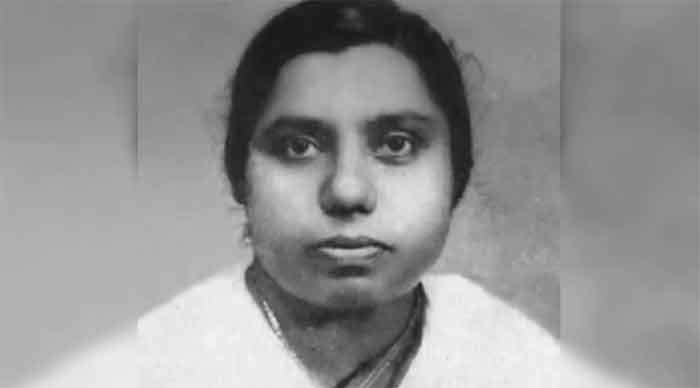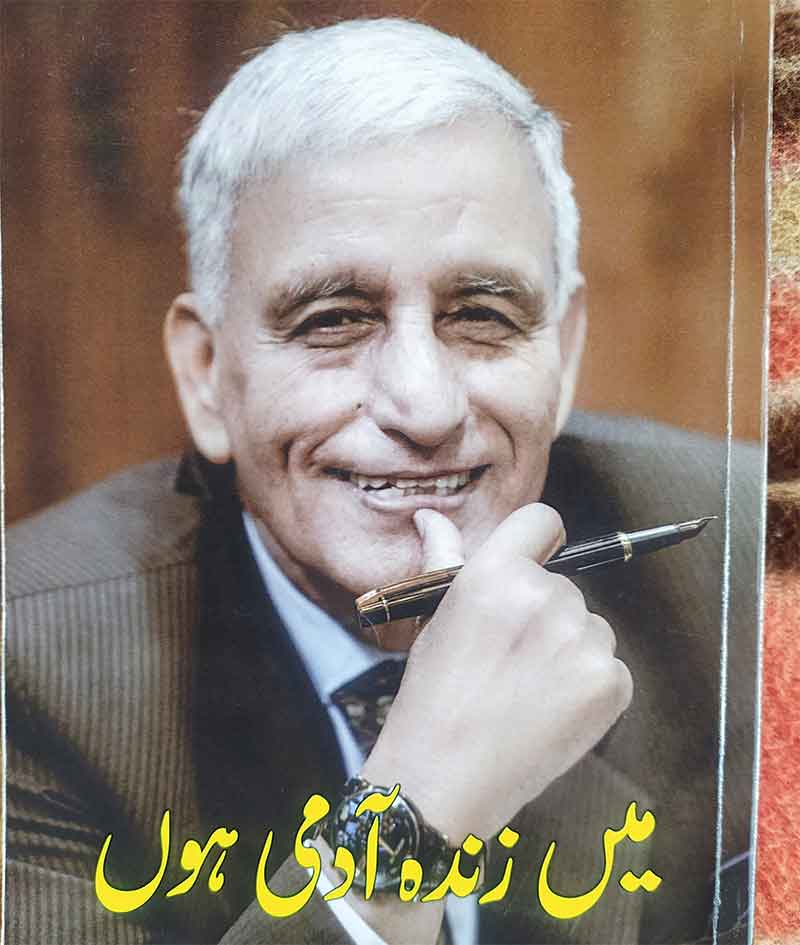Kerala has given birth to many women achievers in the last century. This is a quick analysis based on case studies of three women achievers, from the areas of science, politics, and law. Though these three achievers are selected purposively and there could be some possibility of a selection bias, this analysis offers some key insights.
ANNA MANI (23 August 1918 – 16 August 2001)

Anna Mani was born in the Modayail family of Peermedu in the erstwhile Travancore. Anna’s journey from a shy schoolgirl born in the household of a traditional Syrian Christian cardamom planter in Kerala’s Idukki district to a scientist who made India self-reliant on meteorology has many lessons for the Indian youth. The choices she made in her life made the difference.
On her eighth birthday, she was given an offer of a precious pair of ear rings as a gift by her father. She did not accept this gift – instead, she asked him to buy a set of Encyclopedia Britannica. She was a great reader and unlike other girls of her age in her village, she picked up and read all the books available in her local Library.
Mahatma Gandhi visited her hometown when he reached Travancore. Listening to his ideas of self-reliance at the early age of seven was a turning point in her life. Inspired by him and the Indian National Movement, she started wearing Khadi.
When she graduated from Madras University with a BSc in Physics in1939, she was given the offer of marrying a wealthy man, but she was clear on what to do in life. Anna Mani never married as marriage was never the end for her.
She worked as a ‘demonstrator’ at the Women’s Christian College in Chennai for a short while. She wanted to go for higher studies for which the funding was not coming through easily. With her hard work, she managed to get a scholarship and a seat in IISc Bangalore in 1945. From there she went to Imperial College, London with a Government of India scholarship and specialized in the application of meteorological instruments.
Despite offers to work and stay back in Britain, she returned to India in 1948 to join the Meteorological department of India in Pune. By 1953, she had become the head of the division with 121 men working for her.
She was responsible for procuring meteorological instruments. As India was importing all the meteorological instruments from Britain, Anna Mani wanted to make India independent in making all the weather instruments.
She set up a small workshop in Bangalore that manufactured instruments for measuring wind speed and solar energy. She also set up a meteorological observatory and an instrumentation tower at the Thumba rocket launching facility. In 1967, Mani’s team developed the Indian ozonesonde, a balloon-borne instrument to measure ozone levels in the atmosphere.
Not only she made India self-reliant in measuring aspects of the weather but also helped lay the ground for harnessing solar and wind power as alternative sources of energy.
She was transferred to Delhi in 1969 and later retired as the Deputy Director-General of the Indian Meteorological Department in 1976.
Even after retirement, she remained active by working at the Raman Research Institute in Bangalore and edited science journals. In the 1980s, Anna Mani published two pioneering books viz. ‘Handbook of Solar Radiation Data for India’ and ‘Solar Radiation over India’. Both these books became a key reference for those engaged in the design and deployment of solar thermal systems in India and paved the way for several solar energy harvesting projects such as the one in Kochi International Airport which is the first fully solar energy run airport in the world.
Anna Mani is one of those unsung patriotic heroes of Modern India who contributed to India’s growth with a scientific temper and modern outlook. Her life should be publicized more to inspire Indian youth today.
AKKAMMA CHERIYAN (1909- 1982)

Akkamma Cheriyan was born in the Karippaparambil family of Kanjirapally to a devoted Syrian catholic couple – Thomman and Annamma. She took a BA degree, became a high school principal, spent two and a half years in jail, and, at 44, fought a parliamentary byelection when she was eight months pregnant with her only child.
Her active participation in India’s freedom movement, especially for establishing a responsible and democratic government in Travancore/Kerala, was greatly appreciated by national leaders like Mahatma Gandhi who called her the Jhansi Rani of Travancore.
In the 1930s, when the Congress party was declared illegal and the Congress workers were arrested without a warrant, she was given the task of leading a newly formed Strikers’ Union, and leading a procession to the King’s palace braving all obstacles and submit a memorandum of rights to the King. Akkamma was only 29 years at that time.
She writes in her autobiography titled ‘Jeevitham: Oru Samaram’ (Life: A Protest): ‘I was aware of the seriousness of the assignment and knew what the consequences could be, yet I volunteered to do the job.’
Subsequently, on 23 October 1938, she organized and led the largest protest rally in the history of Travancore to disrupt the birthday celebrations of the Maharaja. The ocean of people gathered in that rally shouted slogans like ‘Bharat Mata ki Jai’, ‘Mahatma Gandhi ki Jai’ and ‘State Congress ki Jai’.
Noted writer E M Kovoor while describing this historical protest led by Akkamma Cherian wrote: “Not hundreds but tens of thousands wearing white Khaddar Jubbahs and still whiter Gandhi caps were surging forward in massive waves… Akkamma Cherian was leading that white sea, standing in an open jeep, dressed in khaddar and a Gandhi cap, like Goddess Durga crushing beneath her feet evil and injustice; her hair played in the wind like black flags hoisted against autocracy.”
In her autobiography, Akkamma herself wrote: “Shakespeare has said that the world is a stage and that all the men and women merely players; but to me, this life is a long protest – protest against conservatism, meaningless rituals, societal injustice, gender discrimination, against anything that is dishonest, unjust…when I see anything like this, I turn blind, I even forget who I am fighting…”
Though she was a dedicated Congress party worker and later its president in the state of Travancore, she was considered a communist by the common people due to her fierce fighting spirit. When Akkamma Cheriyan’s only child, a son born in 1953, was taken for a walk, children would shout after him and her, ‘Malenkovinte makkal!’ — Malenkov’s child — the child of a Communist.
For more than fifteen years she was probably the toughest woman in public politics in Travancore/Kerala and was at the forefront of the momentous people’s struggle in Travancore in the pre-independence era.
Unfortunately, she has vanished into anonymity mainly because the men politicians of her time did not allow her to enjoy the fruits of power. Even today, the number of women politicians in Kerala who enjoys the power as ministers, members of the local assembly, and the parliament is very less, compared to their potential and involvement. Challenging this political equation is a huge responsibility given to women of today by Akkamma Cheriyan. This is the relevance of Akkamma Chriyan today!
ANNA CHANDY (1905 -1996)

Anna Chandy was born in Kerala in 1905. She was a pioneering jurist as the first female law student and first female law graduate from Kerala, the first woman judge (1937) and the first woman high court judge (1959) of India, and the first woman judge in the entire British empire.
I have seen many historians attributing her success to the so-called ‘matriarchal family values’ of her time. This is wrong due to two reasons. First of all, she was not born into a Nair family; she was a Syrian Christian. Secondly, strictly speaking, Nairs practiced matriliny – not matriarchy, just for deciding the inheritance of property. Therefore, Anna has not inherited her pedigree, but she valiantly fought for her position and she claimed it from her community.
Her father passed away when she was very young. She was brought up by her widowed mother. Her mother’s influence in her life was tremendous like that in the life of Arundhati Roy who was brought up by her divorced mother Mary Roy – another brave woman who challenged and corrected the anomalies in the inheritance laws of Syrian Christians.
Anna faced stiff opposition from her patriarchal family members when she expressed her plan to study law. Overcoming all opposition, she got a post-graduate degree in law with Distinction and started practice soon after in 1929 as a successful criminal lawyer.
Later when she contested in elections to the state assembly of Travancore, she faced stiff opposition from men politicians who indulged in a slander campaign against her, alleging sexual immorality. She won the election and became a member of the assembly from 1932 to 1934.
She rightly belongs to the first-generation feminists of Kerala. She fiercely fought for the entry of women into government jobs. Much before the arrival of the women’s reproductive rights movement, she was fully convinced about women’s rights on their own bodies. In 1935, According to one researcher (Kriti Omprakash), she made a speech in which she highlighted “the peculiar situation of Malayalee women who were entitled to property rights, voting rights, and financial independence, but still lacked agency over their own bodies with regard to conjugal rights.”
Despite all these, Anna was a deeply religious person too. Feminist writer J Devika while commenting about Anna’s autobiography writes, “Anna Chandy was a devout Christian and Catholic but she was open to all other faiths”.
Young women today can emulate her as a role model, especially on matters of breaking glass ceilings, fighting for women’s right to decide on the number of children they need to have, and also being spiritual and leading a life of contentment.
What are the insights from the life of these women?
All the three women came up from ordinary families in the interior parts of Travancore. This is perhaps dissimilar to the women achievers of other parts of the country where women from mostly elite family backgrounds whose parents were also achievers in the areas of law, politics, and science. These three were not the children of parents who initiated them to the profession which their parents have practiced. Rather they struggled against patriarchy and regressive social values which did not encourage them to get educated and employed.
All of them were greatly influenced by Gandhian values of empowerment of women through education and economic independence. The liberating social context which was set by progressive Maharajas, Marxists, and Missionaries greatly helped them.
We can rightly call them self-made achievers. To the question, what made the women achievers of Kerala in the last century is nothing but their own hard work and determination. Of course, the social and historical context of the last century which had encouraged women’s education and tolerated women’s employment has paved the way clearer for them.
(Kandathil Sebastian is a social scientist and author based in New Delhi)
















































